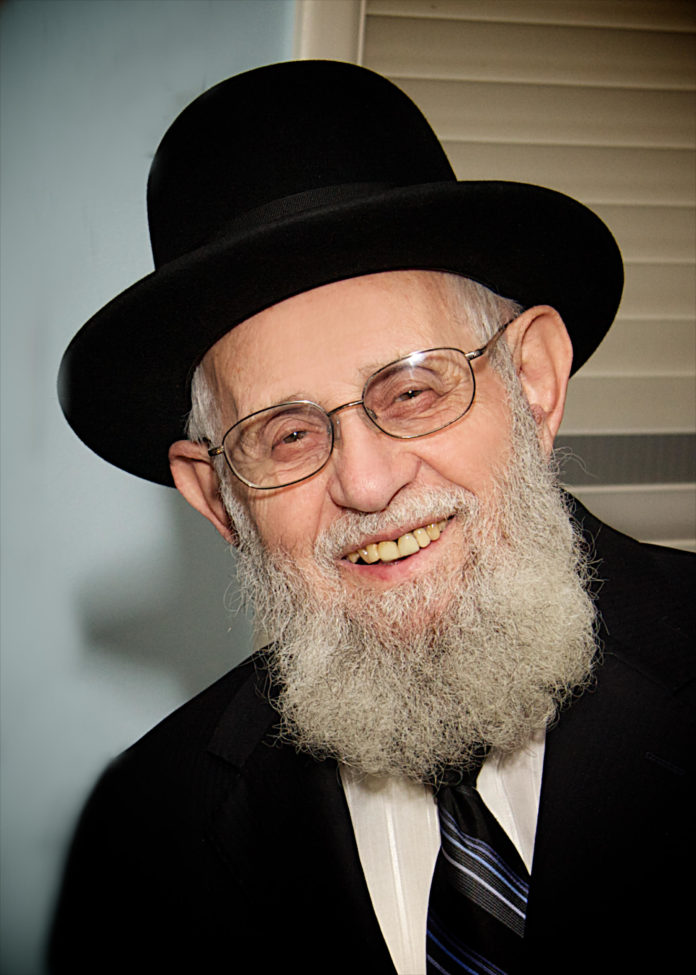Alison Birch, the owner of a hair salon in Stroud, England, was seeking a part-time stylist. The advertisement (it was the UK, so read it “adVERtisment”) she submitted to a local job center publication was rejected.
It contained nothing tasteless or morally objectionable. What was offensive, Ms. Birch related, was her addendum noting that her business “is a busy, friendly, small salon, so only happy, friendly stylists need apply.”
Limiting her offer to “happy” people, she says she was told, discriminated against unhappy people, who would feel slighted.
“Was I being a bit insensitive, and is the word ‘happy’ discriminative?” she later wondered. “Or has this whole world all gone mad?”
The correct answer, of course, is B.
Coincidentally, the report of the happy hair salon ad’s rejection reached me (thanks, Yosef Chaim!) the very day I came across a posting on a Facebook page dedicated to the history of old shuls in Baltimore, where I was born and raised.
“Does anyone recall,” the poster asked, “a small shul at the corner of Pimlico Road and Virginia Avenue or Rosalind Avenue? I have a vague childhood recollection of an old Victorian house where, on Simchas Torah, a number of religious men danced their hearts out, most likely in the mid- to late 1950s.”
The shul he described was the one led by my father, zichrono livrachah. I spent the first months of my life on the large house’s second floor, where my parents lived at the time.
And the man’s description was accurate. My father’s name was Simcha Bunim and it well reflected his essence. (Bunim, according to one theory, mirrors “Simcha” and comes from the French bonhomme, or “good-natured, happy man.”)
Many of his congregants were non-observant Jews. And many became observant as a result of studying Torah with him, his ready smile and his reservoir of encouraging words—his bonhomie.
Happiness, in fact, imbued the Novarodoker yeshivos, in one of which my father was learning when World War II broke out. He spent the war years, courtesy of the Soviets, in Siberia with a handful of fellow Novarodoker talmidim and their rebbe, Rav Yehudah Leib Nekritz, zt”l, whom I was fortunate to meet several times and who always had the warmest smile on his shining face.
Novarodokers famously took life very seriously and were known for their stress on rigorous mussar, including self-criticism and personal improvement.
But what resulted were not broken, depressed, neurotic souls but joyous, determined, soaring ones. How did that happen?
I think the answer lies in the Novarodok stress on valuing every day, every moment, we have on earth. “Now [we’re] here; later, there,” goes one Novarodoker niggun. And it’s a lively, upbeat one.
Embracing reality wholeheartedly—including our mortality and our purpose, facing the fact that we have responsibilities and cannot afford to waste time—yields not gloom but joy. We’re here. Our lives are meaningful. What greater spur to happiness could there be?
Rosh Hashanah telegraphs the same idea. On the one hand, it is a day of judgment and fear. And yet Nechemiah (8:10) told klal Yisrael in Eretz Yisrael that Rosh Hashanah is not to be a sad day but one on which all should “go, eat choice foods and drink sweet drinks, and send portions to whoever has nothing prepared… Do not be sad, for your rejoicing in Hashem is the source of your strength.”
A Rosh Hashanah mashal I once offered my high school talmidim in a previous life was a roller coaster ride. Terror and joy, I observed, can coexist in the very same moment. What yields both is the rush of reality, the thrill of feeling acutely alive.
As we pass before Hashem kivnei maron, like sheep being counted one by one, the message is that each of us is an individual with a particular and meaningful mission in life. That should exhilarate us.
A phrase from Dovid Hamelech’s second tehillah (pasuk 11) has become associated with the Yomim Nora’im: “v’gilu bir’ada, and rejoice with trembling.” For good reason.
Have a joyous Yom Hadin! l



















